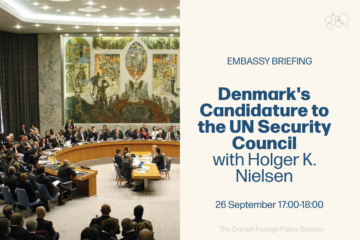France, China and the art of naval diplomacy in the Indo-Pacific
By Liselotte Odgaard
A French carrier strike group is making its way through the Indo-Pacific on a four-month deployment that comes amid rising United States-China tensions. A carrier group is the most muscular expression of power projection capabilities far from national shores. It also plays the role of a diplomat, sending political messages from one government to another. On this current deployment, French aircraft carrier Charles de Gaulle is sailing east of India for the first time since 2002. Earlier this month, it took part in La Perouse, a series of military exercises with vessels from the US, Australia and Japan in the Bay of Bengal. It was the first time the four navies have exercised exclusively together. The carrier group set out in March from Toulon in France and sailed through the Mediterranean, the Red Sea, the Arabian Sea and the Bay of Bengal. It will pass through the Strait of Malacca and make a stop in Singapore in time for the Shangri-La Dialogue, which starts on Friday. At the annual meeting of defence ministers from the world’s major powers, Chinese Defence Minister Wei Fenghe is expected to make a strong case against the US strategy of a free and open Indo-Pacific. While Paris does not want the deployment of the carrier strike group to be seen as France ganging up with the US against China, it can be interpreted as a way by which France seeks to counterbalance growing Chinese influence. The carrier group’s visit to the Indo-Pacific comes on the heels of a series of meetings French President Emmanuel Macron held last year with leaders of the US, India, Japan and Singapore. At the meetings, Mr Macron pledged that France would play its part in ensuring peace, stability and a rules-based order in the Indo-Pacific.
France’s reluctance to present itself as part of a united front against China can be explained by Paris’ European agenda. Since 2016, France has tried to mobilise support for an annual European deployment in the Indo-Pacific. The plans would help longstanding French efforts at building a European Union military force. However, European tensions with the Trump administration have complicated those plans. The EU is distancing itself from US pressures on its European allies to adopt Washington’s confrontational stance against China. At the same time, the EU and China have found themselves on the same side on issues such as the reform of the World Trade Organisation. In short, the EU sees China as both a partner and a competitor. As seen in the Indo-Pacific context, France walks a tightrope between working with the US and its partners to give Europe a defence footprint that is taken seriously, and sticking to the European policy of maintaining cordial relations with China.
WHAT DOES FRANCE BRING TO THE TABLE ON BEHALF OF EUROPE?
With Britain embroiled with Brexit and receding from the EU, France, for now, is Washington’s main European partner in providing added military strength in the Indo-Pacific. The US and France form the core of the present carrier group deployment. Furthermore, French territorial possessions, economic investments and permanent military bases in the Indo-Pacific give it additional stakes in the region. Its Indian Ocean bases in La Reunion and Mayotte also add to the network of military assets of like-minded partners that stretches from Oman and Djibouti to Yokohama in Japan.
France also stands to gain from a higher profile in the Indo-Pacific. Military exercises with regional partners offer an outstanding opportunity to showcase its weaponry, such as its Rafale Marine fighters and submarines. To be sure, in the arena of big power play, France is a minnow. Its military has a single aircraft carrier compared with America’s 11 and China’s two. France is careful to adopt a balancing act of strengthening defence cooperation with the US without alienating China. It is noteworthy that from Singapore, French destroyer Forbin plans to proceed through the South China Sea to Vietnam, but without emulating the US in conducting navy exercises close to Chinese-claimed features. The point would be made though that France considers the South China Sea international waters, without directly challenging China’s presence. As China’s navy expands at a rapid clip, France’s naval diplomacy is well received in Washington, which is looking for partners willing to adopt hard power responses to China’s growing presence. It may not be able to match China in firepower, but the French tradition of a strong and independent defence profile as well as its Indo-Pacific territories provide it with unique strengths. By joining forces with like-minded Indo-Pacific partners and including its overseas territories in base-sharing arrangements, France could help prove the point that middle powers acting in concert are not to be dismissed.


